A New Option for Craft Cocktail Ice
I first became aware of the Klaris Clear Ice Maker when it was pre-launch in 2022. I don’t recall if it was an ad or a Google search that led me to Klaris, but I signed up to be notified of the product release. I figured it was a long shot, but I also sent an email introducing myself. I didn’t expect a response and after a few months, I had nearly forgotten about the Klaris.
Roughly 5 months later I received a response from Chase Haider, Klaris founder and CEO himself. Much to my surprise, he said he read my ice mold review back in 2020 while he was working on the research and development for what was to become Klaris. After a bit of back and forth, we set up a time for a Zoom call—I wanted to know more about his underdog story and what compelled him to launch his product in such a competitive market.
Table of Contents
- Intro
- Interview with Chase Haider
- Review Overview
- Making Ice with Klaris
- Klaris Aesthetics
- Klaris Build Quality
- Freezing Objects in Cubes
- Conclusion (Plus 10% Off Coupon)
Intro
The allure of the crystal clear cube is nothing new. When added to a pour of fine whiskey or a negroni it is as much a functional garnish as it is a statement piece. This coveted clarity once reserved for craft cocktail bars first made its way to the home cocktail enthusiast through laborious DIY methods in the late 2000s.
A few years later, many home cocktail enthusiasts purchased cube-shaped molds that were advertised with photos of perfectly clear ice cubes, yet they were disappointed by the dismal cloudy results. Eventually, the tedious concept of the “Igloo cooler method” combined with the use of silicone molds and craft ice was no longer the folly of the obsessive. While all these ice molds were based on the same underlying principle, there existed a wide range in quality and price.
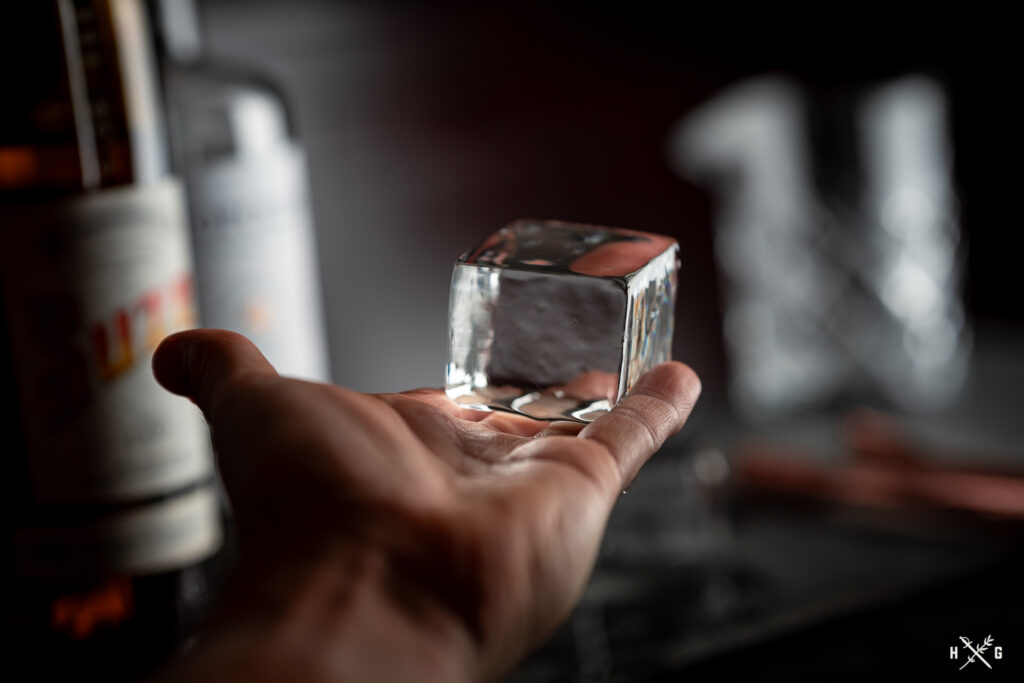
It was only a matter of time before the early brands that understood this concept of directional freezing and created quality products were being undercut by knockoff brands selling for a lower price. Many products are simply white labeled—identical molds produced in the same Chinese factory with a different logo imprinted. That said, the majority of the available products now offer directional freezing, and, therefore, produce clear ice, but there are still two areas where there is room for improvement—build quality and ease of use.
While both of these will increase a product’s price, it’s worth it in the long run for the cocktail enthusiast. Of all the ice molds I previously reviewed, the ones that I’ve continued to use offer both. If there were a third factor to consider, it would be the sizable freezer space required for these insulated ice molds.
The way these factors are addressed is what initially stood out to me about Klaris. (If you’re interested in buying one, I have a 10% off code for you!)
Interview with Chase Haider, Klaris Founder
Andrew Saliga: Do you recall the first time you experienced clear ice in a craft cocktail?
Chase Haider: In 2018 I was living in Boston, and I’d come home to the Twin Cities and there was this cocktail bar where we’d all go out and get drinks. I ordered an Old Fashioned that came with one of those super large crystal clear cubes and was like “This is sweet”. At the time I had been working in 3D printing for 7 or 8 years and, if you’re familiar with the process, it’s all about building up objects layer by layer. Ironically, that’s how you make clear ice too. I was intrigued.
I started doing research online and came across Camper English’s site, Alcademics, and basically read the entire blog. I started trying out all the different methods and bought all the different silicone molds and stuff. Throughout 2019 I tried it at home and came to realize it is kind of a pain in the butt. So in 2020, I took a leap. I was originally focused on doing a commercial unit but realized there was going to be a ton of competition. So I thought, “Let’s see if we can make a dedicated countertop appliance that could accomplish the same thing.”
That was the genesis, and then the past year and a half to two years it’s been product development and manufacturing.
Saliga: Your website it states that there were 7 iterations and 20 prototypes. What was that process like?
Haider: First, I built a rough ice maker… I took a cube ice maker, you know, the ones with the water that flows over the top and makes the little cubes? I tore it apart, turned it upside down, and then put a bread pan on top and just had a little pump circulate the water. So that was my first proof of concept. Then I put everything into a model. I had a consultant mechanical engineer and a consultant electrical engineer, and then my background is chemical engineering. I kind of see myself as the glue between the process and all the specialties.
So they would design it and I would order prototypes. I would get them in-house I would build the whole thing, test the crap out of it…put thermal couplers in, measure the ice, and program it. Then I’d put all the feedback into a presentation, send it back to the engineers, and then they would do the next design iteration.
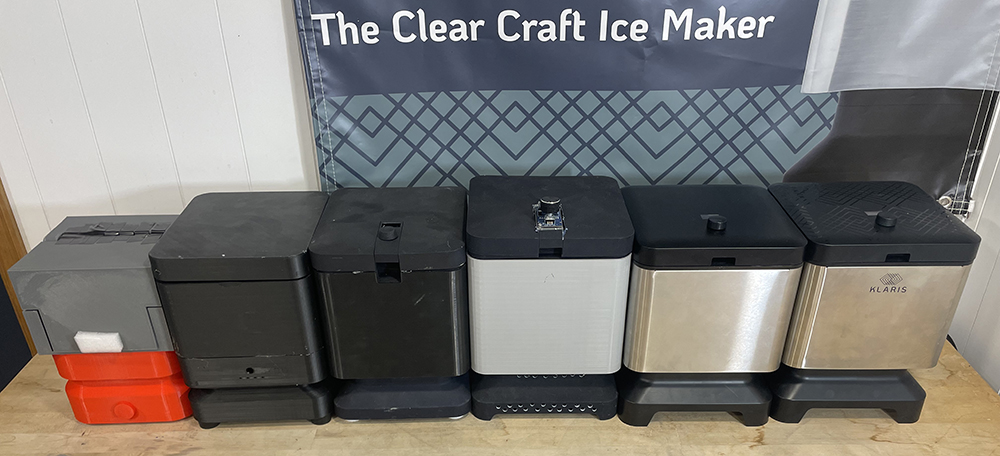
We went from an Alpha to a Beta to a Charlie. Charlie was right before we locked in the design for production. Within each one of those, you get parts in, you put them together, and be like, “Oh, this isn’t going to work,” and you make some modifications. So within each one of those rounds, there were probably 2-3 revisions.
The general shape hasn’t changed, but a lot of what is under the hood has. My mother-in-law is like “When’s this thing going to launch? It doesn’t look like it’s changed.” It’s just that there are so many details behind the scenes.
There’s a big difference between making one of something that works and then making hundreds or thousands of something that work every single time the same way.
Saliga: What would you say was the hardest challenge to solve?
Haider: One of the biggest technical challenges was maintaining ice clarity while freezing quickly and doing it from one direction. Over 6 months were spent iterating on different tray designs and materials until the eureka moment occurred. Another technical challenge has been the impact of environmental factors on the machine. Operating the machine in a basement during a Minnesota winter is much different than an Arizona summer. We continue to learn, iterate, and improve.
Being the sole founder has been the biggest challenge from an entrepreneurial perspective. You bear all the responsibility and decision-making. As an engineer, having to make sales and marketing decisions can be uncomfortable as it is something that is brand new to me. Nonetheless, I welcome the challenge and am fortunate to have an amazing support system of co-workers, advisors, and family to help me through the ups and downs.
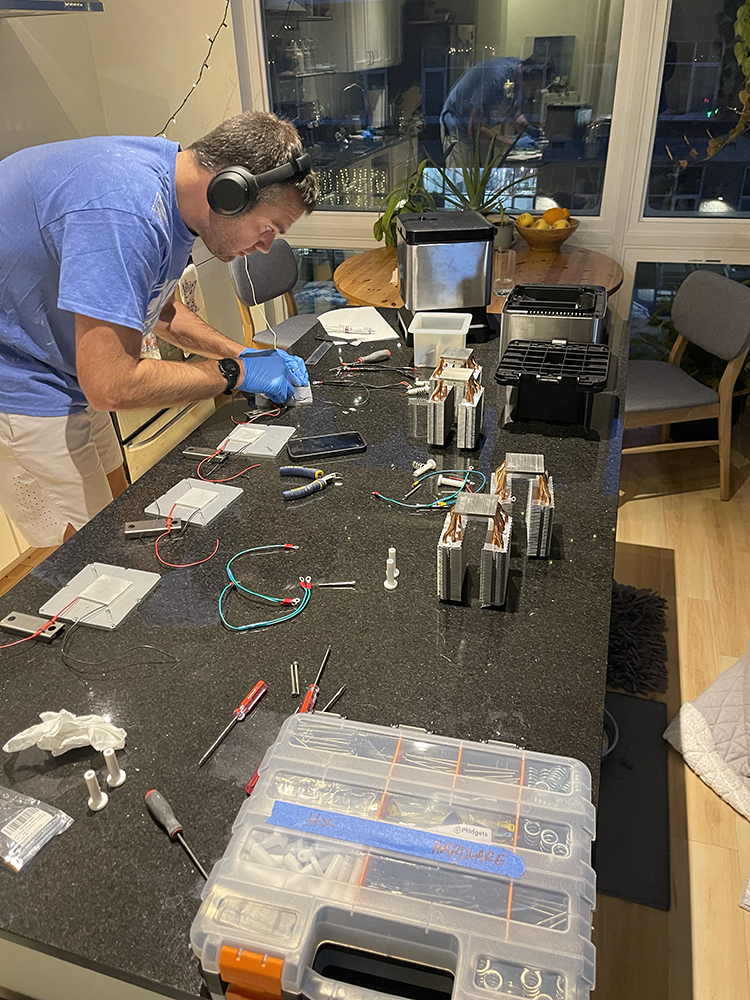
Saliga: There are some other competitors in the space since your launch, can you speak to that?
Haider: Yeah, it’s crazy. At some point, I did see their patent. They were literally in the thick of it coming up with their idea at the same time I was doing this. It was fun to see. The storage is a cool feature, but a hard problem. I’ll be curious to see if that feature is still around at the end of the process.
Saliga: Was a storage feature ever a consideration when designing Klaris?
Haider: We had always seen Klaris as a tool. It’s an ice maker, not an ice maker and storage machine. We’ve always seen the workflow as you start in the morning and collect in the evening then put it in the freezer. I would much rather get a product out faster that’s more compact and intuitive with less complexity. We put it into the user’s hands, get feedback, and then apply it to the next generation. We have an idea now of how we’ll improve storage for the next-generation product based on feedback.
Saliga: Are there any plans to create additional molds? (spheres, diamonds, etc.)
Haider: Yes. Right now we’re playing around with a large block that’s 4″ x 4″ x 2″ that’s currently in beta testing. We’re debating whether you give people a large block that they cut up and use however they want or if you make it for a specific shape. The big request we get is the ability to do spheres. From a process perspective, it’s going to be very difficult for us to do it within the machine. What we will probably lean into is creating an ice press. Doing the big blocks and Collins cubes is something I could see launching this year. We’ve also received requests for smaller 1″ x 1″ cubes as well.
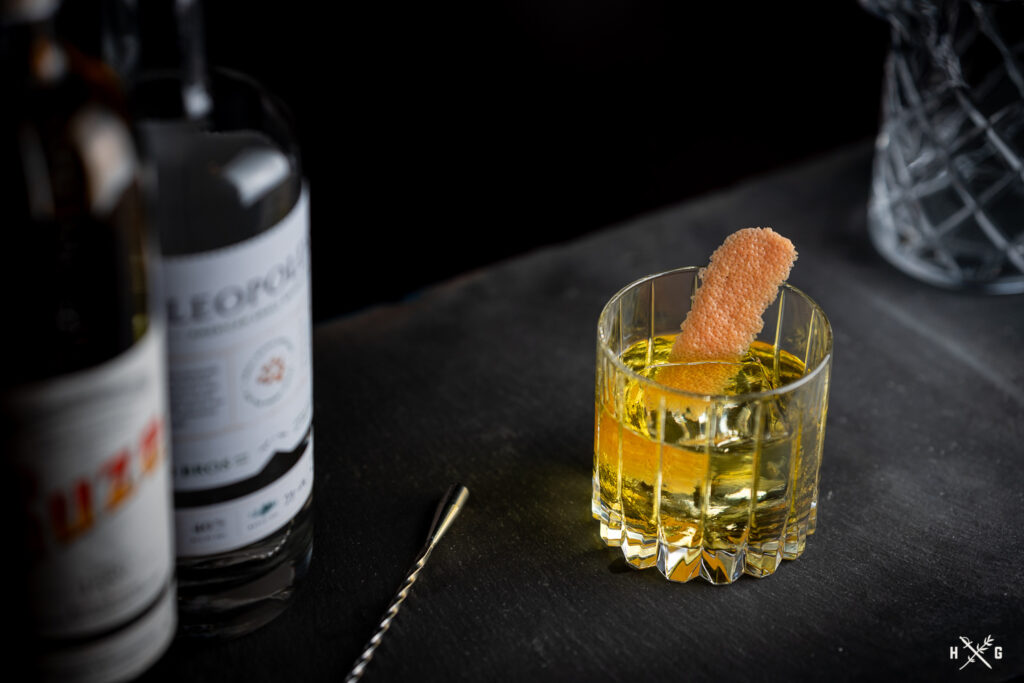
Saliga: How did you come up with the name Klaris?
Haider: I love that you asked that question. Klaris is Danish for “clear ice”. I also feel like a lot of appliances these days take on a personality and in the Nordic culture Klaris is a girl’s name. And then with the logo itself, it’s a bunch of stacked cubes. It’s both an ode to my 3D printing days and to making cubes. Then there’s the fact that you can see through the logo, so it’s kind of a sense of clarity.
Full Review: Klaris Clear Ice Maker
Since reaching out to Chase for the interview, I’ve had the Klaris for over 3 months and I’ve had plenty of time to test its capabilities. I’ve run it through countless cycles, intentionally left the ice in for too long, and even tried freezing objects in the cubes. After all this testing (and cocktail consumption) here is what I’ve discovered.
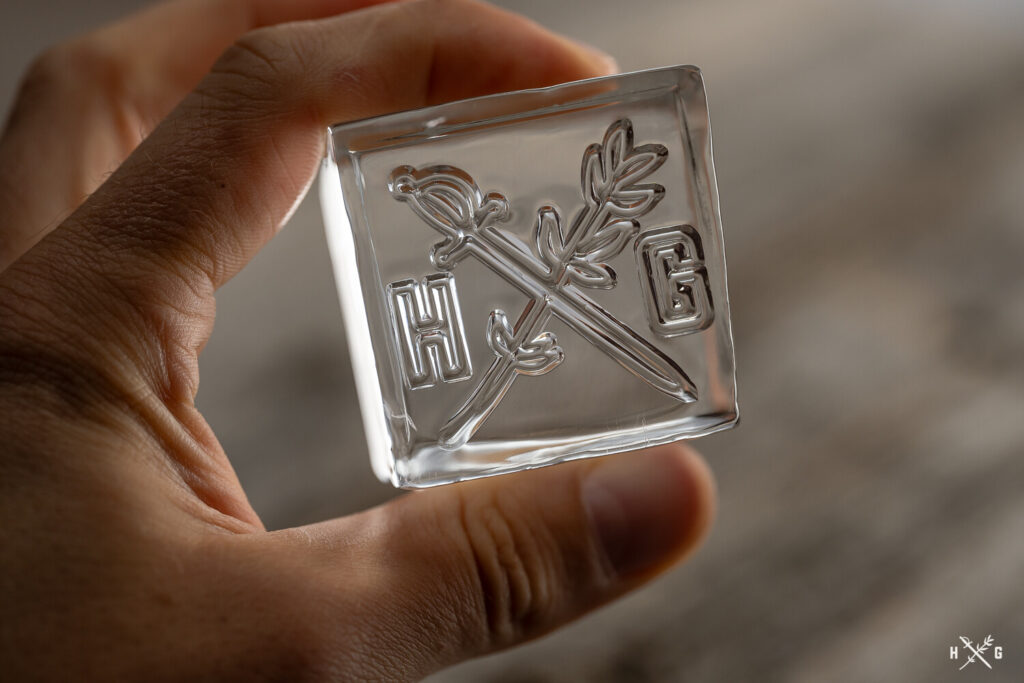
Overview
When testing the Klaris Clear Ice Maker, I hoped that it could consistently produce clear ice with minimal effort on my part. And, at a significantly higher price than simple silicone molds, it needed to do a good enough job that I’d eliminate silicone freezer molds. It needed to be easy to use and create enough cubes without the need to constantly tend to the unit.
It’s worth noting up front that the Klaris retails for $549. While it’s not inexpensive, I think it’s very fairly priced. Plus, with my discount code (HUMBLEGARNISH10), you get over $50 off your order.
With that aside, let’s go over the specs. Klaris is an appliance, not a low-tech silicone mold. Don’t let the simplified design and interface fool you—there’s a lot of clever engineering behind its process. The interface consists of a small blue LCD screen and a scroll wheel/button. Klaris can produce 4 clear cocktail cubes in 8-10 hours and takes up less than 1 square foot of counter space. The device itself is very cube-like at 9″ x 9″ x 12″, and requires approximately 8″ around the unit to allow for hot air to exhaust. The air intake is on the front and sides, while the hot air is exhausted through the rear. The unit’s operation is also very quiet with no significant fan noise during freezing.
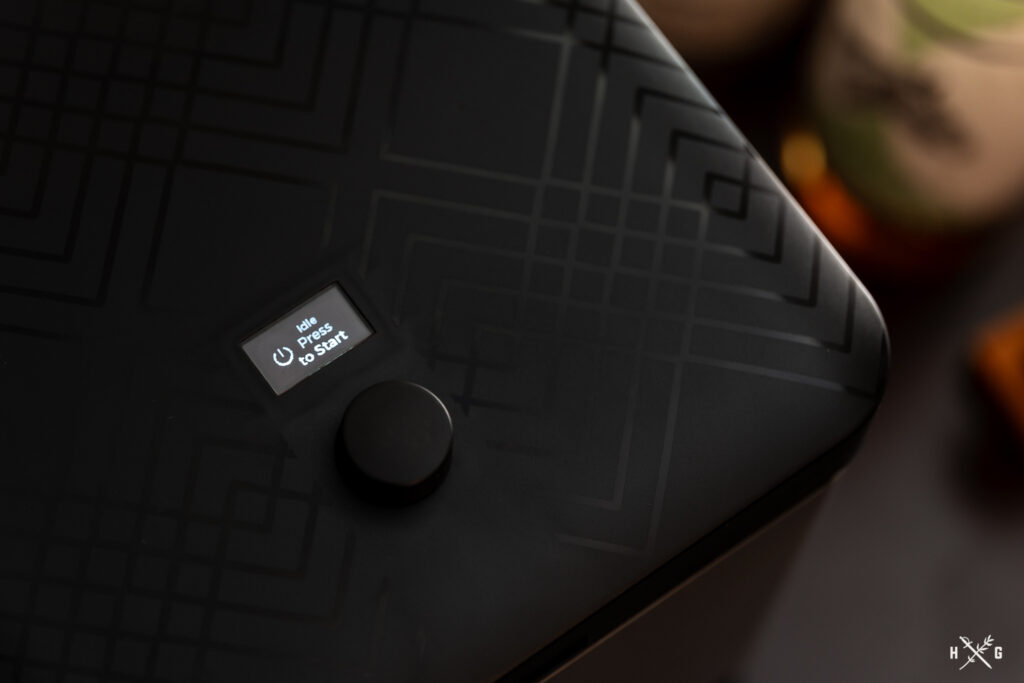
Klaris utilizes directional freezing but does so like a miniature version of a Clinebell machine. If you’re not familiar, Clinebell is the gold standard for creating ice for craft cocktail bars. It uses a cold plate at the bottom of the water reservoir and a pump at the top to keep the water circulating. This allows the directional freezing to occur from the bottom up versus the top-down method that occurs with simple insulated (directional freezing) molds. The main benefit of this method is that instead of having a portion of cloudy ice that needs to be discarded there is simply excess water that needs to be drained. Instead of a pump, Klaris uses a small fan that’s fixed to the inside of the lid to agitate the water on the surface.
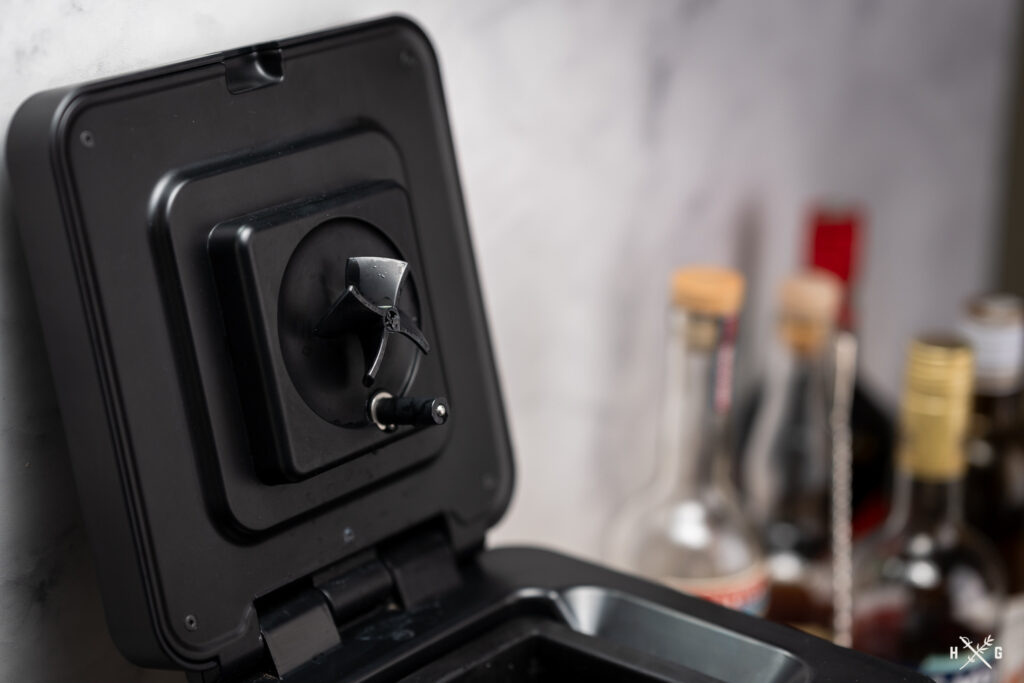
Ice Making Process
Klaris’ process couldn’t be much simpler. First, remove the silicone cube mold and place the thin plastic inserts into the tray. Then fill the tray with water (tap will work) up to the fill line. Make sure the inserts are flush with the silicone and there are no bubbles. I like to use the handle of a wooden spoon to press the inserts and force the bubbles out. Before placing the silicone mold into the appliance make sure that the exterior of the mold and the unit’s freezing plate are dry. I made this mistake early on, and the water would freeze, making it very hard to remove the mold after the freezing process.
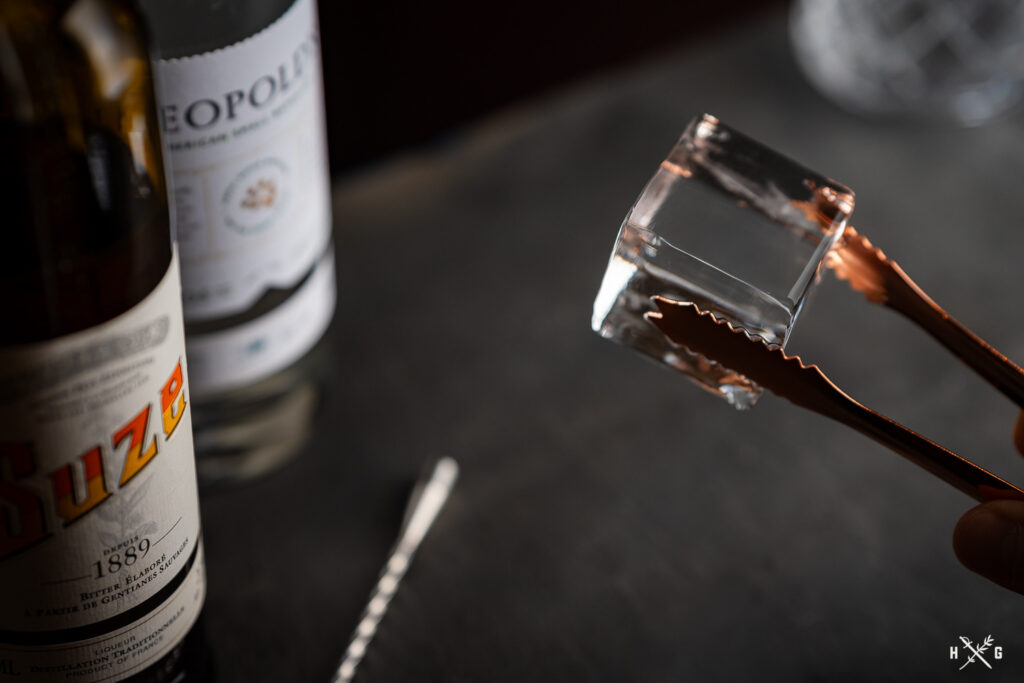
When Klaris is plugged in it defaults to sleep mode until it receives input. After placing the silicone mold in the unit, close the lid and press the single button on the lid. The LCD will transition from “Idle Press to Start” to “Chilling”. The LCD will then display a counter (hours and minutes) that informs you of the current phase from “Chilling” to “Freezing” to “Ice Ready”.
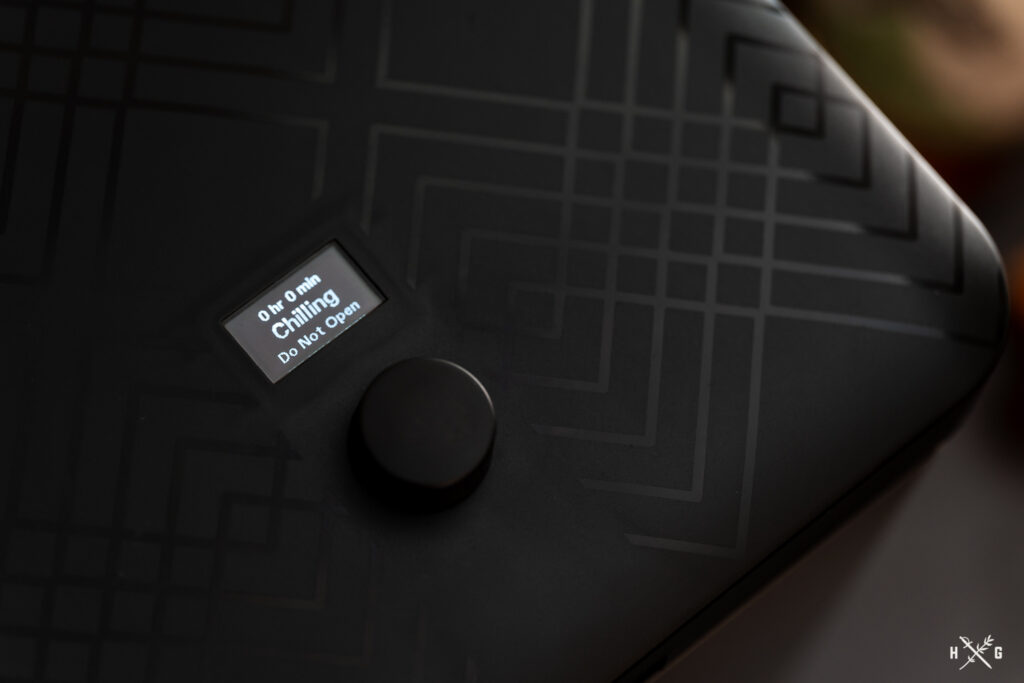
Because the time it takes to freeze the ice will vary based on the temperature of the water and the ambient temperature around the unit, it cannot count down to completion, rather it counts up. It will take 8-10 hours to create 4 cubes.
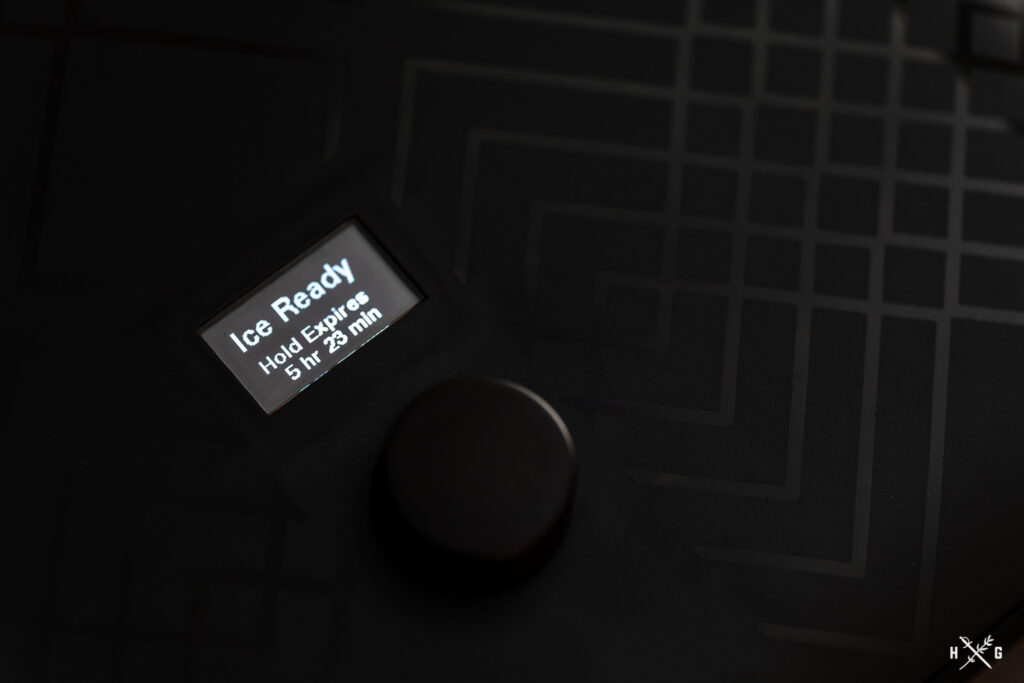
The LCD will display “Ice Ready” when the process is complete. Simply open the lid and wait 2 minutes for the cold plate to slightly release from the silicone. Drain the excess water that is on the surface and then invert the tray of cubes. Now this is one of my favorite features… the silicone on the bottom is thinner and more flexible, allowing you to easily push on each of the four quadrants to drop out the cubes. Remember to gently peel away the two reusable clear inserts. Store the clear ice cubes in a separate container in your freezer. (This silicone storage bag is a great option!) To prevent them from sticking together, shake off any excess water. A salad spinner also works to shake the excess water, but is generally overkill.

If you’re not around to remove the cubes immediately, don’t worry. Klaris has a standby mode that will pause the freezing process and keep the finished cubes in their completed state for 6 hours. If you’ve ever left one of the simple silicone freezer molds in the freezer too long, you know how much of a pain it is to retrieve the ice. I’ve resorted to breaking off the cloudy ice portion with a meat hammer and sending shards of ice all over my kitchen. Although Klaris will hold your cubes in standby mode, removing them closer to completion will result in better quality ice. If you surpass the unit’s standby time, the display will read “Timeout”. Your ice will start to slowly melt, decreasing in size, but will still be usable. If you need to restart the process, do so with fresh water or it won’t work properly. This brings up a notable aspect of Klaris—it is not a refrigeration device, it uses a thermoelectric plate to freeze the ice. While this means you can’t store ice in the unit for an extended period, it does mean that it’ll freeze ice 2-3 times faster. A very valuable trade-off if you ask me.
Aesthetics
Klaris itself has a no-frills design. Its brushed metal and black construction is that of a standard kitchen appliance and will easily occupy counter space without being an eyesore like other countertop ice machines. Overall, the design is sleek and monolithic.
Build Quality
Once unboxed, Klaris only has 4 pieces. The unit itself, the silicone mold, and the two tray inserts. The tray inserts feel like they’re the most delicate part, but after a few months of use, I haven’t encountered any issues with them. The hinge on the lid is solid and I don’t foresee it having any issues with heavy use. The unit itself has rubber feet to prevent slipping on the countertop. I am curious about the longevity of the thinner portion of silicone on the mold’s bottom (where you push to release cubes) but haven’t noticed any wear and tear after 3 months of use. The single button on the lid also performs well—I can only hope that future versions will allow you to unlock a game of snake on the LCD screen like on the Fellow hot water kettles. 😉
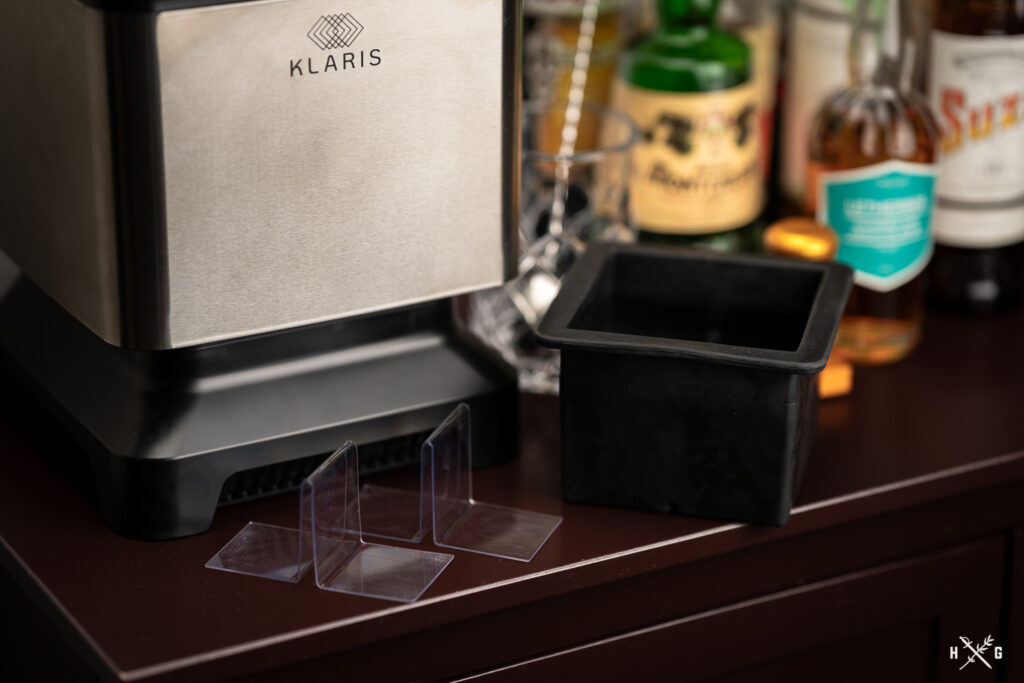
Freezing Objects in the Ice
Freezing things like fruit and flowers has always posed a bit of a challenge, even with simple silicone freezer molds. Objects tend to float and drift when you’d prefer them to remain at the center mass of where your cubes are forming. With the Klaris, I found that using a super thin piece of 36 gauge floral wire (used to make botanical arrangements) is a good hack. Cut the wire so that it’s just long enough to extend into the upper (unfrozen) cold water portion of the mold. Once the freezing process is complete, it’s simple to pull the wire strand out with a pair of pliers. I forgot to snap photos of my results, but perhaps that’s something I’ll add to this post down the road. I’d be curious to see if the future version of the clear plastic insert could incorporate some sort of hole to feed a wire or a T-pin from below.
Conclusion
Klaris is a well-designed appliance that excels in doing the one thing it’s created to do—create clear ice cubes as simply and efficiently as possible. At $549, it’s a very competitively priced product. Klaris currently resides in a category all its own, so an apples-to-apples comparison is a bit challenging. The nearest competitor, Wintersmith’s Juniper, isn’t estimated to be released until September 2024 and it’s going to retail for $999. While I don’t know many people who could justify spending $1,000, Klaris’ $549 price is more of an attainable luxury for the dedicated cocktail enthusiast.
During my testing, I didn’t encounter a single negative aspect or flaw, rather only small things that could easily be product improvements incorporated into future models. It’s clear that there’s a new go-to for creating crystal-clear ice at home.
PS — If you’re wanting to purchase a Klaris, I have a special discount code that will give you over $50 off! To claim your 10% discount simply use this link or use code HUMBLEGARNISH10.
The discount is only available when purchasing directly from Klaris, but if you’re in a pinch and need that 2-day Amazon Prime shipping, it is available there too!
Additional Resources
- Klaris Website
- Reusable Silicone Ice Storage Bag
- The Ultimate Clear Ice Mold Review
- Camper English’s Book – The Ice Book
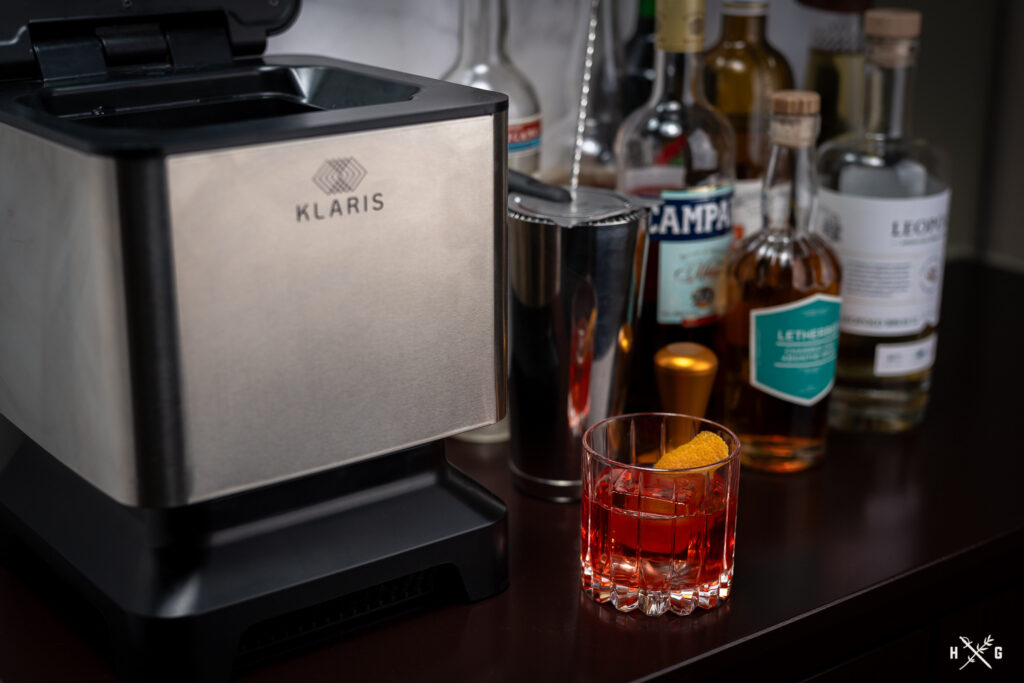
I created The Humble Garnish because I’m passionate about cocktails. Occasionally, I am provided with products for review or other perks. Many product links on this site are affiliate links that give me a very small kickback, and costs the buyer nothing extra. For example, as an Amazon Associate, I earn from qualifying purchases after a link leading to Amazon is clicked. Other links may earn me affiliate commissions as well. This helps offset the cost of creating content for the site – things like camera gear, software, alcohol, glassware. I have at times accepted and at other times declined free products. I promote what I love and use, and rarely will write about a product that I don’t appreciate or own. If I don’t like a product or service, I often simply choose not to write about it.
– Andrew

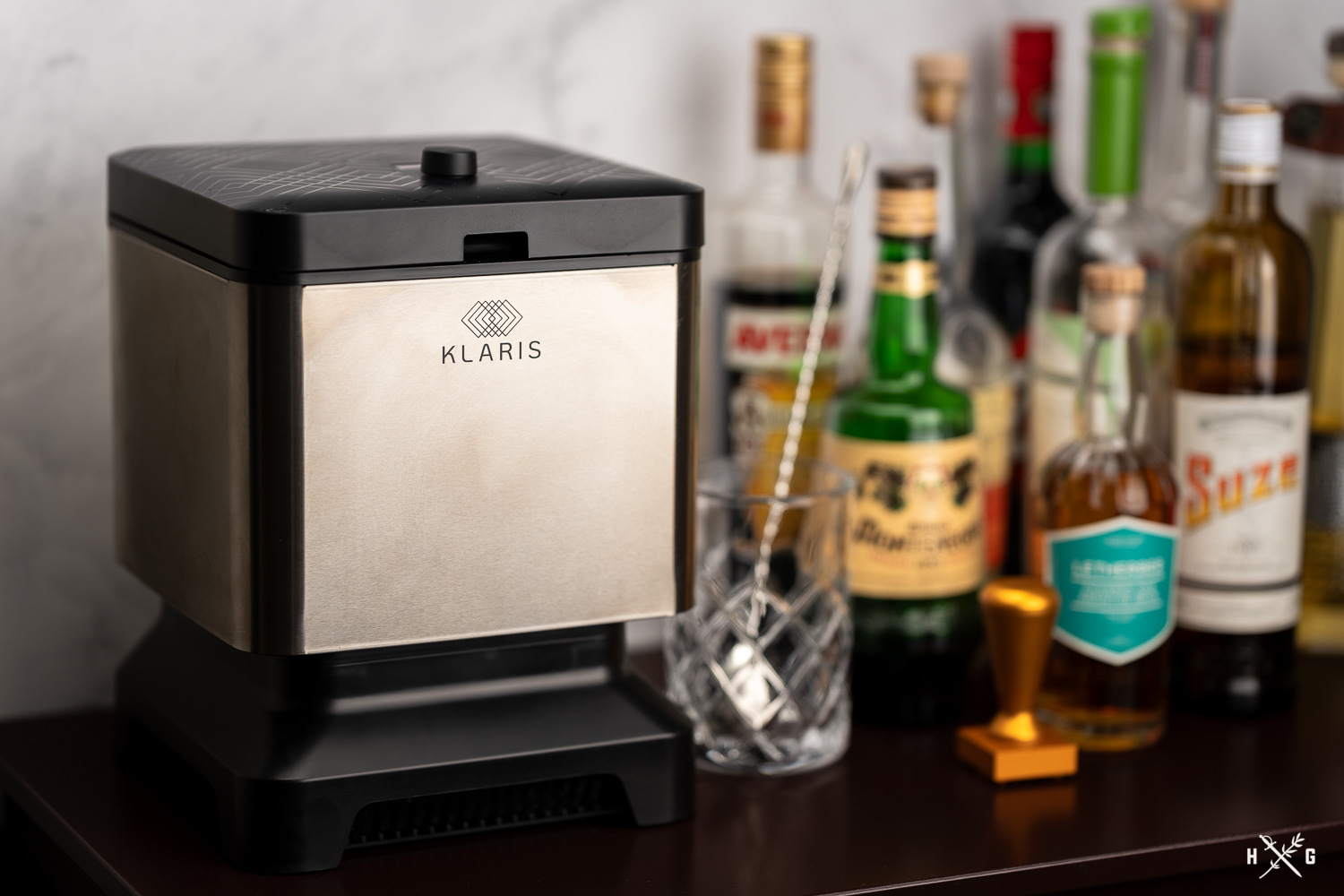
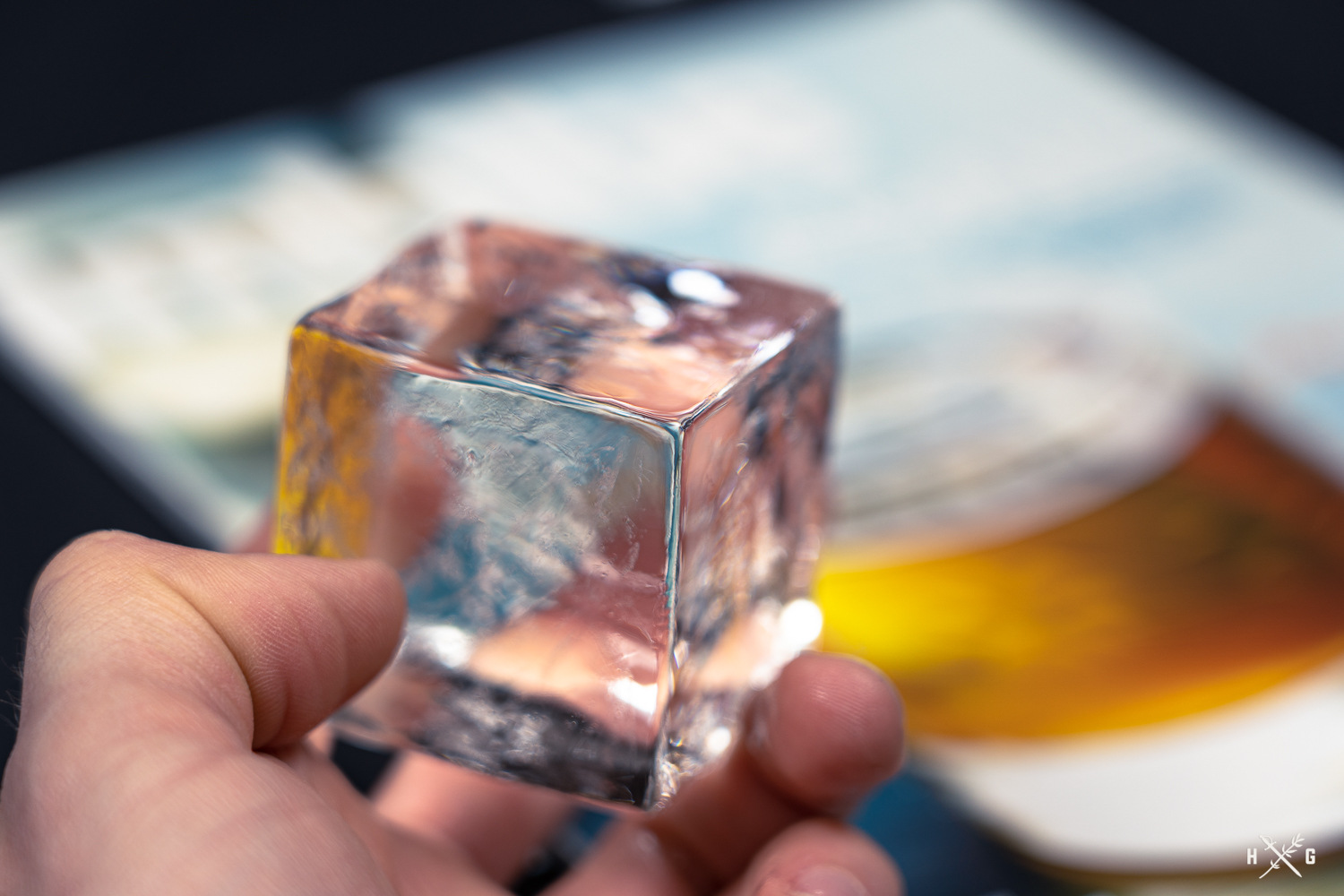
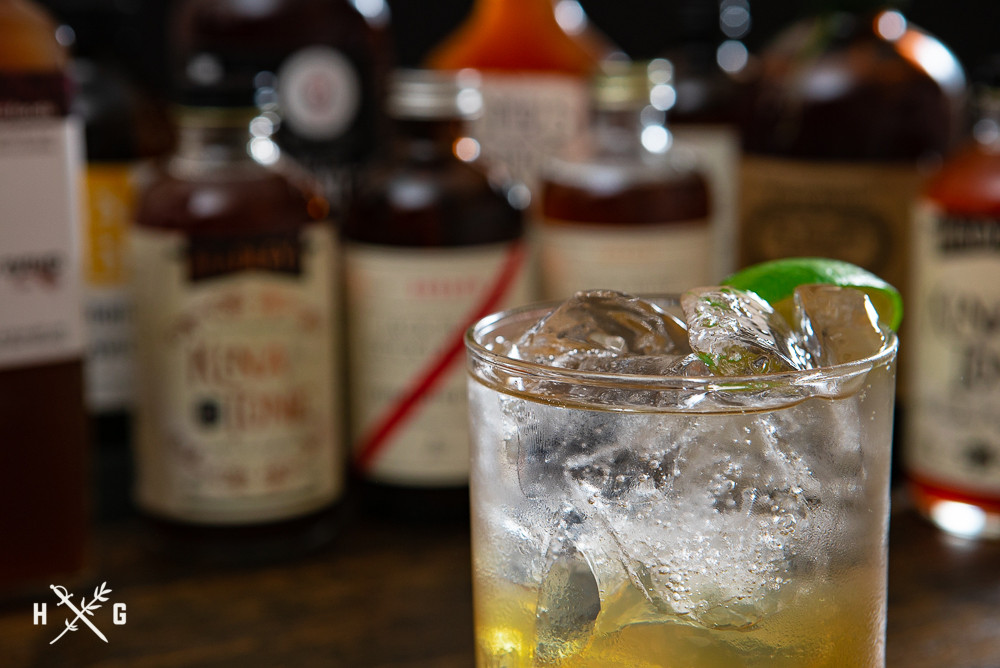
Great review. I’m about to press the button to order though wonder if I should wait their next iteration?
Thanks, Jade! Good question… I haven’t heard anything from Chase about when to possibly expect a version 2. If I hear anything, my readers will be the first to know. 🍸
Do you sell replacement molds
Hi, John. Unfortunately, I don’t directly sell the Klaris or their molds. I’d imagine sales have been high leading up to Father’s Day…hopefully they are back in stock soon. Klaris support may be able to give you more info.
Cheers!